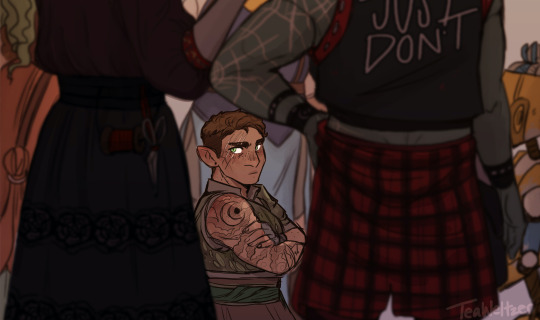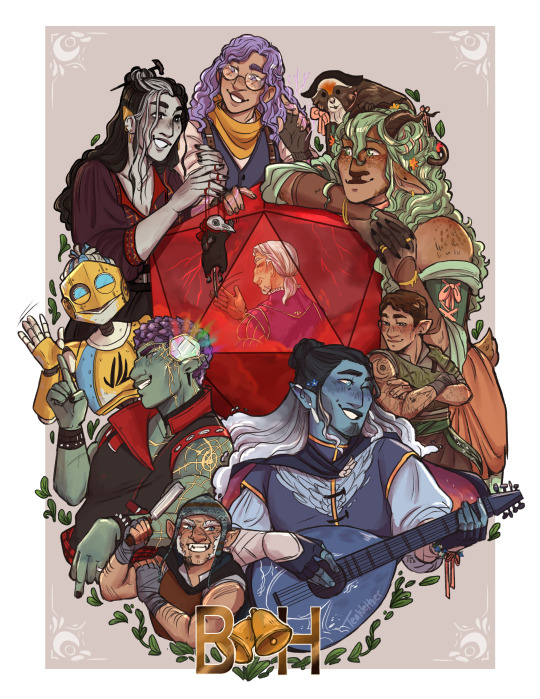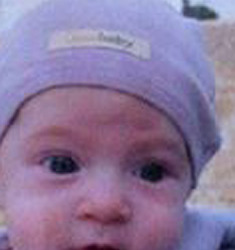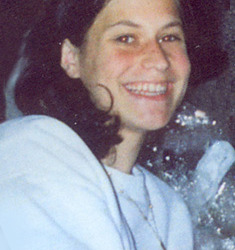#apr 20 2023
Note
Let me get this straight so I'm not mis-understanding anything. Is Real Ciel an animated corpse that Undertaker has brought to an imitation of life, and that RC is still at the mental/emotional/psychological age when he died? Does RC realize and is aware that he's a Bizarre Doll that isn't going to grow up?
Real Ciel as a Bizarre Doll
He is definitely a corpse that Undertaker has reanimated. In ch141, Undertaker even correctly says "reanimation", not "revival".

His mental age is difficult to determine. He does seem to have the ability to learn. Not only did Undertaker have real Ciel witness as much as possible of our earl's doings, so he would soak up those experiences...

...but real Ciel also learns about our earl's management of the estate. He has no personal interest in continuing with Funtom Co., but at least he does recognize the hard work and determination that went into building such a large and successful business. In ch141 still, Undertaker points out he can think on his own, so he can input and process new information. He has changed some since being reanimated, but it seems to be mostly for the worse, in many respects. Colder, meaner. Heartless (just like Claus in Mother3).

The last part is also a bit hard for me to say with any certainty. He is aware that he's a bizarre doll, and he seems to understand he's not exactly alive. Our earl and Undertaker discuss this fact right in front of him (also ch141).
However, if he believes that Undertaker can fully revive him (soul transplant, etc.), he might assume he still has a future ahead of him where he's alive again, able to grow, able to have a family of his own someday, and so on.
#black butler#kuroshitsuji#undertaker#real ciel#ciel phantomhive#bizarre doll ciel#bizarre dolls#reanimation#revival#soul transplant#minnesotamermaid71#asks#i answer#answered asks#apr 20 2023
102 notes
·
View notes
Text
kristincolby: Almost 3 weeks of being home and I still think about our trip to Japan daily. Sitting here with tears in my eyes making this reel and feeling so overwhelmingly grateful to have had the chance to create such incredible memories.
[Apr 20, 2023]
#mikey way#kristin colby way#rowan way#kennedy way#janelle allisa#staceyey#christa toro#ig#2023#apr 2023#4/20/23#mcr#return#mar 2023#2023 nz/aus/japan tour#tokyo#adaline hill#moments to memories#song: moments to memories#vid#originals#eye strain /
39 notes
·
View notes
Note
they have a point though. you wouldn't need everyone to accommodate you if you just lost weight, but you're too lazy to stick to a healthy diet and exercise. it's that simple. I'd like to see you back up your claims, but you have no proof. you have got to stop lying to yourselves and face the facts
Must I go through this again? Fine. FINE. You guys are working my nerves today. You want to talk about facing the facts? Let's face the fucking facts.
In 2022, the US market cap of the weight loss industry was $75 billion [1, 3]. In 2021, the global market cap of the weight loss industry was estimated at $224.27 billion [2].
In 2020, the market shrunk by about 25%, but rebounded and then some since then [1, 3] By 2030, the global weight loss industry is expected to be valued at $405.4 billion [2]. If diets really worked, this industry would fall overnight.
1. LaRosa, J. March 10, 2022. "U.S. Weight Loss Market Shrinks by 25% in 2020 with Pandemic, but Rebounds in 2021." Market Research Blog.
2. Staff. February 09, 2023. "[Latest] Global Weight Loss and Weight Management Market Size/Share Worth." Facts and Factors Research.
3. LaRosa, J. March 27, 2023. "U.S. Weight Loss Market Partially Recovers from the Pandemic." Market Research Blog.
Over 50 years of research conclusively demonstrates that virtually everyone who intentionally loses weight by manipulating their eating and exercise habits will regain the weight they lost within 3-5 years. And 75% will actually regain more weight than they lost [4].
4. Mann, T., Tomiyama, A.J., Westling, E., Lew, A.M., Samuels, B., Chatman, J. (2007). "Medicare’s Search For Effective Obesity Treatments: Diets Are Not The Answer." The American Psychologist, 62, 220-233. U.S. National Library of Medicine, Apr. 2007.
The annual odds of a fat person attaining a so-called “normal” weight and maintaining that for 5 years is approximately 1 in 1000 [5].
5. Fildes, A., Charlton, J., Rudisill, C., Littlejohns, P., Prevost, A.T., & Gulliford, M.C. (2015). “Probability of an Obese Person Attaining Normal Body Weight: Cohort Study Using Electronic Health Records.” American Journal of Public Health, July 16, 2015: e1–e6.
Doctors became so desperate that they resorted to amputating parts of the digestive tract (bariatric surgery) in the hopes that it might finally result in long-term weight-loss. Except that doesn’t work either. [6] And it turns out it causes death [7], addiction [8], malnutrition [9], and suicide [7].
6. Magro, Daniéla Oliviera, et al. “Long-Term Weight Regain after Gastric Bypass: A 5-Year Prospective Study - Obesity Surgery.” SpringerLink, 8 Apr. 2008.
7. Omalu, Bennet I, et al. “Death Rates and Causes of Death After Bariatric Surgery for Pennsylvania Residents, 1995 to 2004.” Jama Network, 1 Oct. 2007.
8. King, Wendy C., et al. “Prevalence of Alcohol Use Disorders Before and After Bariatric Surgery.” Jama Network, 20 June 2012.
9. Gletsu-Miller, Nana, and Breanne N. Wright. “Mineral Malnutrition Following Bariatric Surgery.” Advances In Nutrition: An International Review Journal, Sept. 2013.
Evidence suggests that repeatedly losing and gaining weight is linked to cardiovascular disease, stroke, diabetes and altered immune function [10].
10. Tomiyama, A Janet, et al. “Long‐term Effects of Dieting: Is Weight Loss Related to Health?” Social and Personality Psychology Compass, 6 July 2017.
Prescribed weight loss is the leading predictor of eating disorders [11].
11. Patton, GC, et al. “Onset of Adolescent Eating Disorders: Population Based Cohort Study over 3 Years.” BMJ (Clinical Research Ed.), 20 Mar. 1999.
The idea that “obesity” is unhealthy and can cause or exacerbate illnesses is a biased misrepresentation of the scientific literature that is informed more by bigotry than credible science [12].
12. Medvedyuk, Stella, et al. “Ideology, Obesity and the Social Determinants of Health: A Critical Analysis of the Obesity and Health Relationship” Taylor & Francis Online, 7 June 2017.
“Obesity” has no proven causative role in the onset of any chronic condition [13, 14] and its appearance may be a protective response to the onset of numerous chronic conditions generated from currently unknown causes [15, 16, 17, 18].
13. Kahn, BB, and JS Flier. “Obesity and Insulin Resistance.” The Journal of Clinical Investigation, Aug. 2000.
14. Cofield, Stacey S, et al. “Use of Causal Language in Observational Studies of Obesity and Nutrition.” Obesity Facts, 3 Dec. 2010.
15. Lavie, Carl J, et al. “Obesity and Cardiovascular Disease: Risk Factor, Paradox, and Impact of Weight Loss.” Journal of the American College of Cardiology, 26 May 2009.
16. Uretsky, Seth, et al. “Obesity Paradox in Patients with Hypertension and Coronary Artery Disease.” The American Journal of Medicine, Oct. 2007.
17. Mullen, John T, et al. “The Obesity Paradox: Body Mass Index and Outcomes in Patients Undergoing Nonbariatric General Surgery.” Annals of Surgery, July 2005. 18. Tseng, Chin-Hsiao. “Obesity Paradox: Differential Effects on Cancer and Noncancer Mortality in Patients with Type 2 Diabetes Mellitus.” Atherosclerosis, Jan. 2013.
Fatness was associated with only 1/3 the associated deaths that previous research estimated and being “overweight” conferred no increased risk at all, and may even be a protective factor against all-causes mortality relative to lower weight categories [19].
19. Flegal, Katherine M. “The Obesity Wars and the Education of a Researcher: A Personal Account.” Progress in Cardiovascular Diseases, 15 June 2021.
Studies have observed that about 30% of so-called “normal weight” people are “unhealthy” whereas about 50% of so-called “overweight” people are “healthy”. Thus, using the BMI as an indicator of health results in the misclassification of some 75 million people in the United States alone [20].
20. Rey-López, JP, et al. “The Prevalence of Metabolically Healthy Obesity: A Systematic Review and Critical Evaluation of the Definitions Used.” Obesity Reviews : An Official Journal of the International Association for the Study of Obesity, 15 Oct. 2014.
While epidemiologists use BMI to calculate national obesity rates (nearly 35% for adults and 18% for kids), the distinctions can be arbitrary. In 1998, the National Institutes of Health lowered the overweight threshold from 27.8 to 25—branding roughly 29 million Americans as fat overnight—to match international guidelines. But critics noted that those guidelines were drafted in part by the International Obesity Task Force, whose two principal funders were companies making weight loss drugs [21].
21. Butler, Kiera. “Why BMI Is a Big Fat Scam.” Mother Jones, 25 Aug. 2014.
Body size is largely determined by genetics [22].
22. Wardle, J. Carnell, C. Haworth, R. Plomin. “Evidence for a strong genetic influence on childhood adiposity despite the force of the obesogenic environment” American Journal of Clinical Nutrition Vol. 87, No. 2, Pages 398-404, February 2008.
Healthy lifestyle habits are associated with a significant decrease in mortality regardless of baseline body mass index [23].
23. Matheson, Eric M, et al. “Healthy Lifestyle Habits and Mortality in Overweight and Obese Individuals.” Journal of the American Board of Family Medicine : JABFM, U.S. National Library of Medicine, 25 Feb. 2012.
Weight stigma itself is deadly. Research shows that weight-based discrimination increases risk of death by 60% [24].
24. Sutin, Angela R., et al. “Weight Discrimination and Risk of Mortality .” Association for Psychological Science, 25 Sept. 2015.
Fat stigma in the medical establishment [25] and society at large arguably [26] kills more fat people than fat does [27, 28, 29].
25. Puhl, Rebecca, and Kelly D. Bronwell. “Bias, Discrimination, and Obesity.” Obesity Research, 6 Sept. 2012.
26. Engber, Daniel. “Glutton Intolerance: What If a War on Obesity Only Makes the Problem Worse?” Slate, 5 Oct. 2009.
27. Teachman, B. A., Gapinski, K. D., Brownell, K. D., Rawlins, M., & Jeyaram, S. (2003). Demonstrations of implicit anti-fat bias: The impact of providing causal information and evoking empathy. Health Psychology, 22(1), 68–78.
28. Chastain, Ragen. “So My Doctor Tried to Kill Me.” Dances With Fat, 15 Dec. 2009. 29. Sutin, Angelina R, Yannick Stephan, and Antonio Terraciano. “Weight Discrimination and Risk of Mortality.” Psychological Science, 26 Nov. 2015.
There's my "proof." Where is yours?
#inbox#fat liberation#fat acceptance#fat activism#anti fatness#anti fat bias#anti diet#resources#facts#weight science#save
10K notes
·
View notes
Text
Apr 19 - Gah. Another do-nothing day. Supper was... uuuhhhhh... oh right, fried up some hamburger patties, boiled some potatoes to toss with butter salt pepper and smoked paprika, made a salad.
At this point I think the multiple recent do nothings are stress related. Going back to when my uncle died at the beginning of the month and compounded by other events since.
Apr 20 - ran my laundry, started packing. Heading down to Toronto for ~2 weeks. Possibly longer, depending on whether the health of the person I’m going down to give a hand post-surgery does another dipsy doodle. Dipsy doodles bad. No more of those please.
(Yes this is part of the ‘other events’ mentioned above.)
Did pasta with a tomato & meatball sauce. Sauce from scratch, but premade meatballs. Because convenience.
1 note
·
View note
Text
Prison-tech company bribed jails to ban in-person visits

I'm on tour with my new, nationally bestselling novel The Bezzle! Catch me in BOSTON with Randall "XKCD" Munroe (Apr 11), then PROVIDENCE (Apr 12), and beyond!

Beware of geeks bearing gifts. When prison-tech companies started offering "free" tablets to America's vast army of prisoners, it set off alarm-bells for prison reform advocates – but not for the law-enforcement agencies that manage the great American carceral enterprise.
The pitch from these prison-tech companies was that they could cut the costs of locking people up while making jails and prisons safer. Hell, they'd even make life better for prisoners. And they'd do it for free!
These prison tablets would give every prisoner their own phone and their own video-conferencing terminal. They'd supply email, of course, and all the world's books, music, movies and games. Prisoners could maintain connections with the outside world, from family to continuing education. Sounds too good to be true, huh?
Here's the catch: all of these services are blisteringly expensive. Prisoners are accustomed to being gouged on phone calls – for years, prisons have done deals with private telcos that charge a fortune for prisoners' calls and split the take with prison administrators – but even by those standards, the calls you make on a tablet are still a ripoff.
Sure, there are some prisoners for whom money is no object – wealthy people who screwed up so bad they can't get bail and are stewing in a county lockup, along with the odd rich murderer or scammer serving a long bid. But most prisoners are poor. They start poor – the cops are more likely to arrest poor people than rich people, even for the same crime, and the poorer you are, the more likely you are to get convicted or be suckered into a plea bargain with a long sentence. State legislatures are easy to whip up into a froth about minimum sentences for shoplifters who steal $7 deodorant sticks, but they are wildly indifferent to the store owner's rampant wage-theft. Wage theft is by far the most costly form of property crime in America and it is almost entirely ignored:
https://www.theguardian.com/us-news/2023/jun/15/wage-theft-us-workers-employees
So America's prisons are heaving with its poorest citizens, and they're certainly not getting any richer while they're inside. While many prisoners hold jobs – prisoners produce $2b/year in goods and $9b/year in services – the average prison wage is $0.52/hour:
https://www.dollarsandsense.org/archives/2024/0324bowman.html
(In six states, prisoners get nothing; North Carolina law bans paying prisoners more than $1/day, the 13th Amendment to the US Constitution explicitly permits slavery – forced labor without pay – for prisoners.)
Likewise, prisoners' families are poor. They start poor – being poor is a strong correlate of being an American prisoner – and then one of their breadwinners is put behind bars, taking their income with them. The family savings go to paying a lawyer.
Prison-tech is a bet that these poor people, locked up and paid $1/day or less; or their families, deprived of an earner and in debt to a lawyer; will somehow come up with cash to pay $13 for a 20-minute phone call, $3 for an MP3, or double the Kindle price for an ebook.
How do you convince a prisoner earning $0.52/hour to spend $13 on a phone-call?
Well, for Securus and Viapath (AKA Global Tellink) – a pair of private equity backed prison monopolists who have swallowed nearly all their competitors – the answer was simple: they bribed prison officials to get rid of the prison phones.
Not just the phones, either: a pair of Michigan suits brought by the Civil Rights Corps accuse sheriffs and the state Department of Corrections of ending in-person visits in exchange for kickbacks from the money that prisoners' families would pay once the only way to reach their loved ones was over the "free" tablets:
https://arstechnica.com/tech-policy/2024/03/jails-banned-family-visits-to-make-more-money-on-video-calls-lawsuits-claim/
These two cases are just the tip of the iceberg; Civil Rights Corps says there are hundreds of jails and prisons where Securus and Viapath have struck similar corrupt bargains:
https://civilrightscorps.org/case/port-huron-michigan-right2hug/
And it's not just visits and calls. Prison-tech companies have convinced jails and prisons to eliminate mail and parcels. Letters to prisoners are scanned and delivered their tablets, at a price. Prisoners – and their loved ones – have to buy virtual "postage stamps" and pay one stamp per "page" of email. Scanned letters (say, hand-drawn birthday cards from your kids) cost several stamps:
https://pluralistic.net/2024/02/14/minnesota-nice/#shitty-technology-adoption-curve
Prisons and jails have also been convinced to eliminate their libraries and continuing education programs, and to get rid of TVs and recreational equipment. That way, prisoners will pay vastly inflated prices for streaming videos and DRM-locked music.
The icing on the cake? If the prison changes providers, all that data is wiped out – a prisoner serving decades of time will lose their music library, their kids' letters, the books they love. They can get some of that back – by working for $1/day – but the personal stuff? It's just gone.
Readers of my novels know all this. A prison-tech scam just like the one described in the Civil Rights Corps suits is at the center of my latest novel The Bezzle:
https://us.macmillan.com/books/9781250865878/thebezzle
Prison-tech has haunted me for years. At first, it was just the normal horror anyone with a shred of empathy would feel for prisoners and their families, captive customers for sadistic "businesses" that have figured out how to get the poorest, most desperate people in the country to make them billions. In the novel, I call prison-tech "a machine":
a million-armed robot whose every limb was tipped with a needle that sank itself into a different place on prisoners and their families and drew out a few more cc’s of blood.
But over time, that furious empathy gave way to dread. Prisoners are at the bottom of the shitty technology adoption curve. They endure the technological torments that haven't yet been sanded down on their bodies, normalized enough to impose them on people with a little more privilege and agency. I'm a long way up the curve from prisoners, but while the shitty technology curve may grind slow, it grinds fine:
https://pluralistic.net/2021/02/24/gwb-rumsfeld-monsters/#bossware
The future isn't here, it's just not evenly distributed. Prisoners are the ultimate early adopters of the technology that the richest, most powerful, most sadistic people in the country's corporate board-rooms would like to force us all to use.

If you'd like an essay-formatted version of this post to read or share, here's a link to it on pluralistic.net, my surveillance-free, ad-free, tracker-free blog:
https://pluralistic.net/2024/04/02/captive-customers/#guillotine-watch

Image:
Cryteria (modified)
https://commons.wikimedia.org/wiki/File:HAL9000.svg
CC BY 3.0
https://creativecommons.org/licenses/by/3.0/deed.en
--
Flying Logos
https://commons.wikimedia.org/wiki/File:Over_$1,000,000_dollars_in_USD_$100_bill_stacks.png
CC BY-SA 4.0
https://creativecommons.org/licenses/by-sa/4.0/deed.en
--
KGBO
https://commons.wikimedia.org/wiki/File:Suncorp_Bank_ATM.jpg
CC BY-SA 3.0
https://creativecommons.org/licenses/by-sa/3.0/deed.en
#pluralistic#prison#prison-tech#marty hench#the bezzle#securus#captive audiences#St Clair County#human rights#prisoners rights#viapath#gtl#global tellink#Genesee County#michigan#guillotine watch#carceral state#corruption
1K notes
·
View notes
Text
I wanna share with you a small cut from a 2010 documentary about events that began unfolding in 2008. The film (which was up for an Oscar nomination, but wasn't shortlisted), followed the story of a young kid called Muhammad. He was born with an immunity deficiency that killed two of his sisters. Three other siblings didn't have it, but also weren't a match to donate bone marrow to him. To even consider the donation procedure, Muhammad's family needed 55,000 dollars (over 80,000 dollars today), which they obviously didn't have. An Israeli journalist did a TV piece about Muhammad, asking for the money to be donated. An Israeli man, whose son was a soldier killed by Palestinian terrorists, decided to do exactly that.

While Muhammad was in the Israeli hospital, his mom Raida was by him, and here's an exchange she had with the Israeli journalist who helped the family get the money they needed to save their kid's life:
I'm not sharing this because I want to demonize Raida. I'm not sharing it because every Palestinian thinks this way. I'm sharing it because some Palestinians, certainly the ones related to Islamist terrorist organizations like Hamas, do believe that if their child dies as a shahid (a martyr), during an attempt to kill Jews, then the kid would be with Allah. And that will be as if their child never died, because what's better, an imperfect and short life on this earth, or an eternal life with every good thing imaginable by Allah's side? So yes, there are parents who want their kids to die in a confrontation with Israel. There are kids who were brought up with these beliefs. And kindness and humanitarian gestures might change it, but many times they just can't compare to the promise made by this way of thinking.
That's not every Palestinian, but it's enough people to have an impact on the forming and continuation of the Israeli-Arab conflict (much like how Amin al-Husseini was one Palestinian leader, but his antisemitism had a crucial influence on the conflict, and translated into the deaths of countless people, mainly Jews). There are currently at least 30 terrorist organizations in Gaza alone (at least 5 of them are big enough to be household names in Israel), and Hamas on its own includes at least 30,000 people who think this way.
No one can understand this conflict as long as they ignore that the widespread existence of this mentality plays a factor in it. No one can bring about peace here, without getting that this is a part of what threatens it. No one can solve a problem while turning a blind eye to some of its parts.
And if you still think Raida is an exception, here are some more vids reflecting the same mentality from over the years... (I'm not gonna get into how heartbreaking it is that entire generations of Palestinian kids never stood a chance, because I think that's obvious for anyone with a heart watching these clips)
Official Palestinian Authority TV interview with the mother of a shahid, Nov 28, 2003:
youtube
"Being with Allah is better." Hamas TV on Jul 21, 2014:
youtube
Mother of murderer of 3 Israeli teens: "He was honored with Martyrdom because Allah loved him." Oct 6, 2014:
youtube
Palestinian mothers explain why they make joyful noises when their kids get killed as shahids. Apr 7, 2015:
youtube
"Death is inevitable, so why not die as shahids?" Oct 28, 2019:
youtube
Palestinian father explains his choice to expose his son to danger by bringing him to the site of violent riots, by saying his 4.5 years old wants to go to paradise. Jun 20, 2021:
youtube
"My son had nothing called a funeral, rather it was a wedding..." Official Palestinian Authority TV, Sep 13, 2021:
youtube
Shahid's mother says her son is a role model for Palestinian kids. Dec 31, 2022:
youtube
Shahid's mother shares she instructed her son on how to be a proper shaid. Official Palestinian Authority TV, Feb 21, 2023:
youtube
(for all of my updates and ask replies regarding Israel, click here)
#israel#israeli#israel news#israel under attack#israel under fire#israelunderattack#terrorism#anti terrorism#antisemitism#hamas#antisemitic#antisemites#jews#jew#judaism#jumblr#frumblr#jewish#resources
341 notes
·
View notes
Text

There are no salamanders living in the Caribbean today, but one tiny fossil shows that this wasn't always the case.
Palaeoplethodon hispaniolae was discovered in a chunk of amber from the Dominican Republic on the island of Hispaniola. The exact age of this type of amber is uncertain, but it most likely dates to the early-to-mid Miocene, about 20-15 million years ago.
The only known specimen is a hatchling, just under 2cm long (0.8"). It's unclear what its full adult size could have been, but based on its modern relatives it may have grown to anywhere between 4.5cm and 20cm long (~2-8").
Its strongly webbed hands and feet suggest it was very closely related to modern tropical climbing salamanders – but Palaeoplethodon had a unique webbing arrangement, with its feet relatively elongated and its hands fully fused into small rounded pads.
———
NixIllustration.com | Tumblr | Patreon
References:
Iturralde-Vinent, M. A., and R. D. MacPhee. "Remarks on the age of Dominican amber." Palaeoentomology 2.3 (2019): 236–240. https://doi.org/10.11646/palaeoentomology.2.3.7
Poinar Jr, G., and Wake, David B. "Palaeoplethodon hispaniolae gen. n., sp. n.(Amphibia: Caudata), a fossil salamander from the Caribbean." Palaeodiversity 8 (2015): 21-29. https://escholarship.org/uc/item/1f381770
Wikipedia contributors. “Bolitoglossa” Wikipedia, 18 Apr. 2024, https://en.wikipedia.org/wiki/Bolitoglossa
Wikipedia contributors. “Palaeoplethodon.” Wikipedia, 20 Nov. 2023, https://en.wikipedia.org/wiki/Palaeoplethodon
Wikipedia contributors. “Salamander.” Wikipedia, 7 June 2024, https://en.wikipedia.org/wiki/Salamander
#science illustration#paleontology#paleoart#palaeoblr#palaeoplethodon#plethodontidae#urodela#salamander#caudata#lissamphibia#amphibian#art#dominican republic#hispaniola#caribbean#the tree is vaguely a Hymenaea protera#which made the resin Dominican amber comes from#they're in danger :)
258 notes
·
View notes
Text
2023 Tumblr Top 10 😍
I'd like to thank all of you for your support this year.
1. 18,215 notes - Jan 18 2023

2. 12,256 notes - Mar 24 2023

3. 11,381 notes - Sep 6 2023

4. 8,498 notes - May 19 2023

5. 7,904 notes - Apr 19 2023

6. 6,903 notes - Feb 13 2023

7. 5,739 notes - Nov 20 2023

8. 3,175 notes - Oct 16 2023

9. 3,081 notes - Jun 23 2023

10. 2,508 notes - Nov 27 2023

Created by TumblrTop10
738 notes
·
View notes
Text
Yesterday, some yards of fabric and a little snack bag I ordered off Etsy arrived.
Here're the fabrics:
This cool apothecary themed one.

This very small and detailed skull and scrollwork design.

And this larger skull and scrollwork design.

Plus that last one is actually glow-in-the-dark!

And here's the cute food-safe-lined snack bag -- hearses! Every once in a while, a coffin falls out the back! 😂

#off topic slightly#undertaker#morbid#me irl#me in real life#my stuff#stuff i bought#etsy#skulls#hearses#coffins#bones#apothecary#fabric#apr 20 2023
42 notes
·
View notes
Text

Instagram story by mikeyway
[Apr 13, 2023]
#mikey way#matt galle#ig#ig story#mcr#backstage#return#2023#apr 2023#4/13/23#2019#dec 2019#12/20/19#la#shrine auditorium#photo#originals
24 notes
·
View notes
Text
2023 Tumblr Top 10
1. 5,845 notes - Apr 20 2023

2. 4,653 notes - Apr 24 2023

3. 4,397 notes - Jun 9 2023

4. 4,362 notes - May 1 2023

5. 4,330 notes - Apr 17 2023

6. 4,108 notes - Apr 27 2023

7. 4,036 notes - Feb 21 2023

8. 3,834 notes - Apr 21 2023

9. 3,450 notes - May 8 2023

10. 3,147 notes - May 5 2023

Created by TumblrTop10
#tumblrtop10#love that my whole sol series made the top ten <3#Happy new years everyone 😊#got everybody being cute and wholesome and then there's just leo being gay af 😂
360 notes
·
View notes
Text
2023 Tumblr Top 10
1. 6,961 notes - Feb 25 2023

2. 4,601 notes - Apr 20 2023

3. 4,032 notes - Feb 3 2023

4. 3,529 notes - May 15 2023

5. 2,842 notes - Jan 7 2023

6. 2,682 notes - Dec 18 2023

7. 2,662 notes - Mar 27 2023

8. 2,623 notes - Jun 23 2023

9. 2,573 notes - Dec 11 2023

10. 2,398 notes - Mar 15 2023

Created by TumblrTop10
355 notes
·
View notes
Text
Too big to care

I'm on tour with my new, nationally bestselling novel The Bezzle! Catch me in BOSTON with Randall "XKCD" Munroe (Apr 11), then PROVIDENCE (Apr 12), and beyond!

Remember the first time you used Google search? It was like magic. After years of progressively worsening search quality from Altavista and Yahoo, Google was literally stunning, a gateway to the very best things on the internet.
Today, Google has a 90% search market-share. They got it the hard way: they cheated. Google spends tens of billions of dollars on payola in order to ensure that they are the default search engine behind every search box you encounter on every device, every service and every website:
https://pluralistic.net/2023/10/03/not-feeling-lucky/#fundamental-laws-of-economics
Not coincidentally, Google's search is getting progressively, monotonically worse. It is a cesspool of botshit, spam, scams, and nonsense. Important resources that I never bothered to bookmark because I could find them with a quick Google search no longer show up in the first ten screens of results:
https://pluralistic.net/2024/02/21/im-feeling-unlucky/#not-up-to-the-task
Even after all that payola, Google is still absurdly profitable. They have so much money, they were able to do a $80 billion stock buyback. Just a few months later, Google fired 12,000 skilled technical workers. Essentially, Google is saying that they don't need to spend money on quality, because we're all locked into using Google search. It's cheaper to buy the default search box everywhere in the world than it is to make a product that is so good that even if we tried another search engine, we'd still prefer Google.
This is enshittification. Google is shifting value away from end users (searchers) and business customers (advertisers, publishers and merchants) to itself:
https://pluralistic.net/2024/03/05/the-map-is-not-the-territory/#apor-locksmith
And here's the thing: there are search engines out there that are so good that if you just try them, you'll get that same feeling you got the first time you tried Google.
When I was in Tucson last month on my book-tour for my new novel The Bezzle, I crashed with my pals Patrick and Teresa Nielsen Hayden. I've know them since I was a teenager (Patrick is my editor).
We were sitting in his living room on our laptops – just like old times! – and Patrick asked me if I'd tried Kagi, a new search-engine.
Teresa chimed in, extolling the advanced search features, the "lenses" that surfaced specific kinds of resources on the web.
I hadn't even heard of Kagi, but the Nielsen Haydens are among the most effective researchers I know – both in their professional editorial lives and in their many obsessive hobbies. If it was good enough for them…
I tried it. It was magic.
No, seriously. All those things Google couldn't find anymore? Top of the search pile. Queries that generated pages of spam in Google results? Fucking pristine on Kagi – the right answers, over and over again.
That was before I started playing with Kagi's lenses and other bells and whistles, which elevated the search experience from "magic" to sorcerous.
The catch is that Kagi costs money – after 100 queries, they want you to cough up $10/month ($14 for a couple or $20 for a family with up to six accounts, and some kid-specific features):
https://kagi.com/settings?p=billing_plan&plan=family
I immediately bought a family plan. I've been using it for a month. I've basically stopped using Google search altogether.
Kagi just let me get a lot more done, and I assumed that they were some kind of wildly capitalized startup that was running their own crawl and and their own data-centers. But this morning, I read Jason Koebler's 404 Media report on his own experiences using it:
https://www.404media.co/friendship-ended-with-google-now-kagi-is-my-best-friend/
Koebler's piece contained a key detail that I'd somehow missed:
When you search on Kagi, the service makes a series of “anonymized API calls to traditional search indexes like Google, Yandex, Mojeek, and Brave,” as well as a handful of other specialized search engines, Wikimedia Commons, Flickr, etc. Kagi then combines this with its own web index and news index (for news searches) to build the results pages that you see. So, essentially, you are getting some mix of Google search results combined with results from other indexes.
In other words: Kagi is a heavily customized, anonymized front-end to Google.
The implications of this are stunning. It means that Google's enshittified search-results are a choice. Those ad-strewn, sub-Altavista, spam-drowned search pages are a feature, not a bug. Google prefers those results to Kagi, because Google makes more money out of shit than they would out of delivering a good product:
https://www.theverge.com/2024/4/2/24117976/best-printer-2024-home-use-office-use-labels-school-homework
No wonder Google spends a whole-ass Twitter every year to make sure you never try a rival search engine. Bottom line: they ran the numbers and figured out their most profitable course of action is to enshittify their flagship product and bribe their "competitors" like Apple and Samsung so that you never try another search engine and have another one of those magic moments that sent all those Jeeves-askin' Yahooers to Google a quarter-century ago.
One of my favorite TV comedy bits is Lily Tomlin as Ernestine the AT&T operator; Tomlin would do these pitches for the Bell System and end every ad with "We don't care. We don't have to. We're the phone company":
https://snltranscripts.jt.org/76/76aphonecompany.phtml
Speaking of TV comedy: this week saw FTC chair Lina Khan appear on The Daily Show with Jon Stewart. It was amazing:
https://www.youtube.com/watch?v=oaDTiWaYfcM
The coverage of Khan's appearance has focused on Stewart's revelation that when he was doing a show on Apple TV, the company prohibited him from interviewing her (presumably because of her hostility to tech monopolies):
https://www.thebignewsletter.com/p/apple-got-caught-censoring-its-own
But for me, the big moment came when Khan described tech monopolists as "too big to care."
What a phrase!
Since the subprime crisis, we're all familiar with businesses being "too big to fail" and "too big to jail." But "too big to care?" Oof, that got me right in the feels.
Because that's what it feels like to use enshittified Google. That's what it feels like to discover that Kagi – the good search engine – is mostly Google with the weights adjusted to serve users, not shareholders.
Google used to care. They cared because they were worried about competitors and regulators. They cared because their workers made them care:
https://www.vox.com/future-perfect/2019/4/4/18295933/google-cancels-ai-ethics-board
Google doesn't care anymore. They don't have to. They're the search company.

If you'd like an essay-formatted version of this post to read or share, here's a link to it on pluralistic.net, my surveillance-free, ad-free, tracker-free blog:
https://pluralistic.net/2024/04/04/teach-me-how-to-shruggie/#kagi
#pluralistic#john stewart#the daily show#apple#monopoly#lina khan#ftc#too big to fail#too big to jail#monopolism#trustbusting#antitrust#search#enshittification#kagi#google
438 notes
·
View notes
Text
Okay, look, they talk to a Google rep in some of the video clips, but I give it a pass because this FREE course is a good baseline for personal internet safety that so many people just do not seem to have anymore. It's done in short video clip and article format (the videos average about a minute and a half). This is some super basic stuff like "What is PII and why you shouldn't put it on your twitter" and "what is a phishing scam?" Or "what is the difference between HTTP and HTTPS and why do you care?"
It's worrying to me how many people I meet or see online who just do not know even these absolute basic things, who are at constant risk of being scammed or hacked and losing everything. People who barely know how to turn their own computers on because corporations have made everything a proprietary app or exclusive hardware option that you must pay constant fees just to use. Especially young, somewhat isolated people who have never known a different world and don't realize they are being conditioned to be metaphorical prey animals in the digital landscape.
Anyway, this isn't the best internet safety course but it's free and easy to access. Gotta start somewhere.
Here's another short, easy, free online course about personal cyber security (GCFGlobal.org Introduction to Internet Safety)
Bonus videos:
youtube
(Jul 13, 2023, runtime 15:29)
"He didn't have anything to hide, he didn't do anything wrong, anything illegal, and yet he was still punished."
youtube
(Apr 20, 2023; runtime 9:24 minutes)
"At least 60% use their name or date of birth as a password, and that's something you should never do."
youtube
(March 4, 2020, runtime 11:18 minutes)
"Crossing the road safely is a basic life skill that every parent teaches their kids. I believe that cyber skills are the 21st century equivalent of road safety in the 20th century."
#you need to protect yourself#internet literacy#computer literacy#internet safety#privacy#online#password managers#security questions#identity theft#Facebook#browser safety#google#tesla#clearwater ai#people get arrested when google makes a mistake#lives are ruined because your Ring is spying on you#they aren't just stealing they are screwing you over#your alexa is not a woman it's a bug#planted by a supervillain who smirks at you#as they sell that info to your manager#oh you have nothing to hide?#then what's your credit card number?#listen I'm in a mood about this right now#Youtube
156 notes
·
View notes
Text
On this Yom Ha'Zikaron Le'Chalalei Ma'rachot Yisrael (Memorial Day for Israel's Fallen Soldiers and Terror Victims), I figured it's important to remember that Israeli victims did not exist solely on Oct 7. We have lost loved ones before and since. Here's a list with just one random victim to represent each year. Please scroll down the list to see how far back it goes.
(part 1/5, all parts in the reblogs)
2024: On Jan 7, we lost 19 years old Shai Garmai

2023: On Oct 7, we lost 28 years old Osama abu Madiam

2022: On Nov 23, we lost 18 years old Tiran Faro

2021: On May 12, we lost 5 years old Ido Avigal

2020: On Aug 26, we lost 39 years old Shai Ochayon

2019: On May 5, we lost 49 years old Zaid al-Chamamda

2018: On Dec 12, we lost Amiad Israel Yish Ran, who was murdered in his mother's womb

2017: On Nov 22, we lost 21 years old Hodaya Nechama Assoulin

2016: On Oct 25, we lost 14 years old Rami Namer abu Amar

2015: On Feb 17, we lost 4 years old Adelle Biton

2014: On Oct 22, we lost 2.5 months old Chaya Zissel Brown

2013: On Dec 24, we lost 22 years old Salech al-Din abu al-Atayef

2012: On Jul 18, we lost 28 years old Yitzchak Idan Kolangi

2011: On Apr 17, we lost 16 years old Daniel Aryeh Viplich

2010: On Feb 26, we lost 52 years old Netta Blatt Sorek

2009: On Apr 2, we lost 13 years old Shlomo Nativ

2008: On Mar 6, we lost 26 years old Doron Trunach Mahareta

2007: On Jun 17, we lost 85 years old Meir Cohen

2006: On Aug 10, we lost 4 years old Fatchi Assdi

2005: On Jul 12, we lost 16 years old Nofar Horvitz

2004: On Sep 29, we lost 2 years old Dorit Massarat Binsan

2003: On Sep 9, we lost 20 years old Naava Appelbom

2002: On Nov 10, we lost 4 years old Noam Levi Ochayon

2001: On Dec 12, we lost 42 years old Ester Avraham

2000: On Nov 21, we lost 19 years old Itamar Yefet

1999: On Jun 24, we lost 34 years old Tony Eliyahu Zanna

1998: On Dec 2, we lost 41 years old Osama Moussa abu Aisha

1997: On Mar 13, we lost 13 years old Natali Alkalai

1996: On Feb 25, we lost 57 years old Yitzchak Elbaz

1995: On Jul 24, we lost 60 years old Zehava Oren

As Tumblr limits a post to 30 images... part 1/5 - the next parts will be posted in the reblogs momentarily. Please check out the full list.
(for all of my updates and ask replies regarding Israel, click here)
#israel#antisemitism#israeli#israel news#israel under attack#israel under fire#terrorism#anti terrorism#hamas#antisemitic#antisemites#jews#jew#judaism#jumblr#frumblr#jewish#israelunderattack
273 notes
·
View notes
Text

Aureia rerehua was a toothed whale that lived during the late Oligocene and early Miocene, around 23-22 million years ago, in shallow coastal waters covering most of what is now Aotearoa New Zealand.
It was closely related to the waipatiids – a group traditionally classified as platanistoids (the South Asian river dolphin lineage), but more recently proposed as instead representing a separate earlier branch of the toothed whale evolutionary tree.
About 2m long (~6'6"), Aureia had distinctive tusk-like teeth that splayed outwards from its snout, interlocking when its mouth was closed. Along with a flexible neck and its fairly delicately-built skull and jaws, this suggests it was specialized for catching small prey in a "fish trap" of teeth, a unique feeding strategy for a toothed whale.
Along with different feeding specializations in other close relatives like Nihohae, Aureia shows us how multiple species of these ancient Aotearoan cetaceans were able to coexist in the same place and time by diversifying into different novel ecological niches.
———
NixIllustration.com | Tumblr | Patreon
References:
Bianucci, Giovanni, et al. "Extensive diversity and disparity of the Early Miocene platanistoids (Cetacea, Odontoceti) in the southeastern Pacific (Chilcatay Formation, Peru)." Life 10.3 (2020): 27. https://doi.org/10.3390/life10030027
Coste, Ambre, R. Ewan Fordyce, and Carolina Loch. "A new dolphin with tusk-like teeth from the late Oligocene of New Zealand indicates evolution of novel feeding strategies." Proceedings of the Royal Society B 290.2000 (2023): 20230873. https://doi.org/10.1098/rspb.2023.0873
de Lazaro, Enrico. "Oligocene-Period Dolphin Had Unique Feeding Method." Sci News, 05 Apr. 2024, https://www.sci.news/paleontology/aureia-rerehua-12827.html
Meekin, Shane, R. Ewan Fordyce, and Amber Coste. "Aureia rerehua, a new platanistoid dolphin from the Oligocene of New Zealand with a unique feeding method." Journal of the Royal Society of New Zealand (2024): 1-20. https://doi.org/10.1080/03036758.2024.2314505
#science illustration#paleontology#paleoart#palaeoblr#aureia#odontoceti#toothed whale#cetacean#whale#artiodactyla#ungulate#mammal#art#marine mammals#it's weird dolphin hours
190 notes
·
View notes